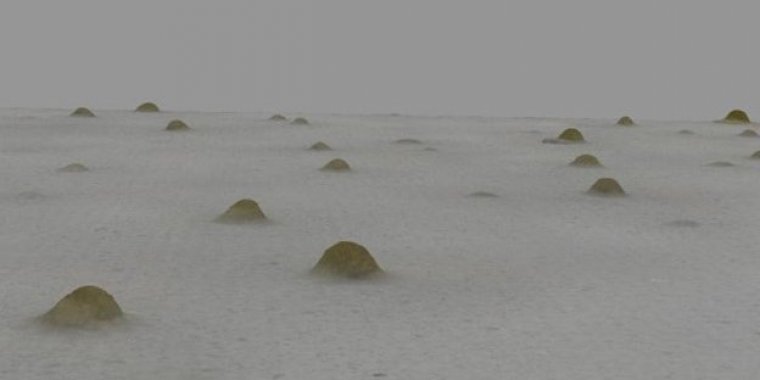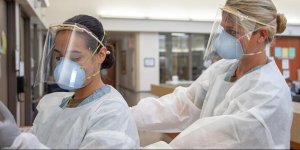| News / Science News |
Social bacteria build shelters using the physics of fingerprints
Forest-dwelling bacteria known for forming slimy swarms that prey on other microbes can also cooperate to construct mushroom-like survival shelters known as fruiting bodies when food is scarce.

When food is scarce, forest-dwelling bacteria come together to build structures called fruiting bodies. Photo: Cassidy Yang/Princeton University
Now, a team at Princeton University has discovered the physics behind how these rod-shaped bacteria, which align in patterns like those on fingerprint whorls and liquid crystal displays, build the layers of these fruiting bodies.
"In some ways, these bacteria are teaching us new kinds of physics," said Princeton physicist Joshua Shaevitz. "These questions exist at the intersection of physics and biology. And you need to understand both to understand these organisms."
Myxococcus xanthus, or Myxo for short, is a bacteria species capable of surprisingly cooperative behaviors. For example, large numbers of Myxo cells come together to hunt other bacteria by swarming toward their prey in a single undulating mass.
When food is scarce, however, the rod-like cells stack atop one another to form squishy growths called fruiting bodies, which are hideaways in which some of the Myxo cells transform into spores capable of rebooting the population when fresh nutrients arrive.
But until now, scientists haven't understood how the rods acquire the ability to begin climbing on top of each other to build the droplet-like structures.
To find out more about how these bacteria behave, the researchers set up a microscope capable of tracking Myxo's actions in 3D.
The scientists recorded videos of the rod-shaped microbes, which pack closely together like stampeding wildebeest, rushing across the microscope dish in swaths that swirl around each other, forming fingerprint-like patterns.
When two swaths meet, the researchers observed, the point of intersection was exactly where the new layer of cells started to form. The bacteria started to pile up and created a situation where the only direction to go was up.
Myxo bacterial cells behave much like liquid crystals, the fluids found in smartphone screens, which are made of rod-shaped molecules. Unlike passive liquid crystals, however, Myxo rods are alive and can crawl.
The bacteria most likely evolved to take advantage of both passive and active factors to build the fruiting bodies, the scientists said. (National Science Foundation)
YOU MAY ALSO LIKE





